As a hunter, you want to score the deer with the highest number of points. Harvesting a 10-points buck is not only a matter of conquest but also of prestige. That brings us to the question, what are 10-points bucks?
Points on a buck are the distinct tines on its antlers. The more the tines, the more points a buck has. A 10-point buck has ten tines on its antlers.

For deer hunters keen on getting unique souvenirs from the animal, learning how to tell them apart by their points is a bonus. Not all bucks come with antlers that can be mounted as trophies. Continue reading as I explain what 10-point bucks are and how you can readily identify or even harvest one.
Table of Contents
Are Buck Points Counted From the Size of His Antlers?
A deer’s antlers are made up of various parts. The main components are the beam, burr, brow tines, bay tines, tray tines, surroyal tines, plus the fork and crown. The beam or shaft is the central stem of the antler. The bony rim of the pedicle is known as the burr.
Brow tines refer to the place at which the first antler branches off. A bay tine is the second branching-off, while tray tines refer to the third branch-off. The fourth is the surroyal tine, and the fork is the point where an antler forks out into two tines. The tine at the top of a buck’s antlers is called a crown.

When antlers are developing during the late spring and summer, they have a consistent blood supply to help with growth. They’re usually covered with a soft hair-like material called velvet. In early fall, the blood supply declines, and the antlers harden.
A buck will rub its antlers against tree trunks, brush, and even rocks to get rid of the velvet. The points, therefore, refer to the number of tines on a buck’s antlers. That means that the rack will have ten points inclusive of all the tines and the central beam.
10-point Bucks Explained
10-point bucks are male deer that are mainly between three to five years of age. A 10-point describes the antlers’ size, not the weight or height of the buck. The size of these antlers is mainly determined by genetics, nutrition, and the deer’s age.
However, it’s important to note that some bucks, where there’s adequate food supply, manage to achieve the 10-points at an earlier age.
Typically, antlers start forming in April as the bucks get to enjoy more sunlight. During this growth period, they are covered by velvet, and their texture is spongy. The antlers become fully formed after only four months, and they harden completely during fall.
After the breeding season, that is, in between December and March, the antlers are now shed. A buck has a single antler on each side of the head, and each antler drops off by itself.
How to Count Bucks’ Points
A tine is any growth that protrudes from the main beam of the antler. Tines must be an inch long or more to qualify as a point. Any growths or nubs that measure less than one inch aren’t counted as points. So, for a 10-point buck, it will have ten tines, five on each side.
There isn’t an exact way to accurately calculate the age of a buck in the course of hunting besides examining its teeth. On the other hand, a buck between three and five years old will be a 10-point buck.

The antlers may start shrinking in size when the bucks reach approximately five and half years and above. As a hunter, you’ll need to consider other factors in distinguishing the bucks’ ages. Mostly, however, a healthy and mature 3 to 5-year-old buck will be a 10-point buck.
There are two methods of counting the points on a buck’s antlers. There is the Eastern Count and the Western Count.
Eastern Point Count
The Eastern Count takes into consideration all the total points on both antlers, including the eye guards. Therefore, in the Eastern Count, a 10-points buck will mean that the buck has 5 points on each side of its antlers, including the eye guards.
Western Point Count
The Western Count does not consider the eye guards and only counts the points from one side. So the same 10-points buck would be a 4-point buck when it is scored using the Western Count.
It is also essential to observe that most Whitetail deer are described according to the Eastern Count. The Western Count is usually applied for Mule deer and elk scoring.
How to Differentiate Bucks in their Various Age Brackets
Bucks in their different age brackets have other physical characteristics that make it possible to tell them apart. Hunters must learn how to tell the specific age of a buck by just looking at them. It comes in handy when making harvest decisions, which allows younger bucks a better chance of survival.
For instance, if you search for a 10-point buck, you need to know the exact physical characteristic to look out for.
The following are the age brackets of the bucks as well as their characteristics:
One-Year-Old Bucks
One-year-old bucks are very easy to identify. These male deer have similar builds with the does when you compare them to older bucks. They have thin necks, and their limbs appear more extended, which gives them a slim-looking body build.
There’s also a unique line that separates the shoulders and neck and some muscle definition. Their tarsal glands are slightly stained during the rut.
Two-Year-Old Bucks
Their waists are thin, and their legs still look like they are longer than their bodies. The tarsal glands are round, small, and stained moderately. The spread of antlers is similar in width to the ears.

For two-year-old bucks, there may be some slight muscle build-up on the neck during the rut.
Three-Year-Old Bucks
Three-year-old bucks have visible stomach lines, and backs are relatively taut and straight. Their necks are distinct from their shoulders, having thicker muscles. The chest starts to become deep compared to their hindquarters, but they still have thin waists.
Three-year-old bucks have legs that appear proportional to their bodies. The antlers now have an even spread outside or within the ears. The tarsal glands are dark and display plenty of staining during the rut.
These bucks have now achieved fifty to seventy-five percent of the maximum antler growth potential. Some of these deer qualify as 10-point bucks.
Four-Year-Old Bucks
Bucks in this age bracket will mostly qualify to be 10-point bucks. They have fully muscled necks that blend well into their deep chests and shoulders. Their backs and stomachs aren’t sagging, yet their high-end have rounded and filled-out appearances.

Four-year-old bucks have taut skin surrounding the jaws. The antlers are heavy, with many points, and they start to show off their potential. They have large, dark-stained tarsal glands during the rut that possibly extend to the legs.
Four-year-old male deer reach up to seventy-five to ninety percent of the maximum antler growth potential with proper nutrition. These bucks are different from their younger versions.
Five to Seven-Year-Old Bucks
Very few bucks live beyond five years except in some places with very favorable conditions. Bucks that are between five and seven years are mainly 12-point bucks. Five to seven-year-old bucks have very short legs for their bodies, and they have quite a number of the characteristics of four-year-olds.
The differentiating factor is that they may have pot bellies, sagging backs, and they have more rounded appearances making them look like small cows.
Eight-Year-Old and Above
A few of the free-ranging bucks will live beyond eight years, also known as the post-mature age. The bucks start to regress in their antler size and body. They also start losing the skin on the shoulders, necks, and faces. Additionally, they have pointy hip bones and shoulders while their antlers begin to show abnormalities related to aging, such as curvy or wavy tines or abnormal points.
While studying the specific physical characteristics of bucks in different age brackets, you’ll realize that there aren’t any specific age-related antler characteristics. Therefore, it’s a good idea not to rely mainly on the antler size when coming up with bucks’ ages.
Six Tips for Scoring 10-Point Bucks
It’ll soon be deer season, and there are ways to make your hunting more productive, with a pair of antlers to mount over your mantelpiece. The following tips will help you to hunt 10-point bucks more successfully. They include;
Scent Control
Bucks have susceptible protective systems in their noses that alert them when predators are close, including human beings. You must be invisible if you hope to hunt any of the 10-point bucks.
Use scent-free soap, which is highly recommended before going hunting. Even the towels you use to dry yourself up must be free from any scents. The same goes for your hunting clothes. Make it a habit of cleaning them with scent-free detergents, and remember to cover your face and head if possible.
Befriend the Wind
Paying attention to the wind is another superb strategy for controlling your scent. Failure to master the wind direction is a huge mistake that makes it difficult for hunters to hit their targets. The buck’s nose is the primary defense mechanism. If it smells a foreign scent, it will take off.
Observe Silence
Being quiet makes it hard for bucks to tell if the movement is from hunters or other animals. Bear in mind that bucks know precisely how human beings sound. Observe silence when getting your gun or bow up to the hunting stand.
It’s also a good idea to wrap metallic gear in duct tape to minimize noise while in the woods. In instances where you feel like coughing, try as much as possible to muffle it up.
Look for Coverage
Whether you are using lock-on stands or climbing stands, it’s advisable to select a tree that is close to another tree around it, behind it, or beside it. That offers some form of cover. Bucks have different lines of sight compared to humans.
If there are trees, leaves, or branches, use these for camouflaging your presence without blocking your shot. On a stand, hunting up in the trees is an added advantage since your scent will be blowing way higher above the ground.
Familiarize Yourself with the Hunting Ground
Be familiar with the hunting ground if you’re to find where the 10-point bucks are at any given time and where they are going. The buck trucks will always tell you if the bucks were already there.
Learn to Stalk the Does
Stalking the does is an excellent tip for any hunter hoping to bag a couple of 10-point bucks. That’s because when the rut is starting, bucks will generally go after the does.
Remember that the rut brings many changes, and most hunters know that this is the easiest time to hunt male deer. Bucks that mostly tend to move during the night will come out during the day.
There are several other tips that you can follow, but if you can faithfully follow the ones above, you’re bound to have an incident-free hunting experience. Most important is to have a keen eye, making it possible for you to point out a 10-point buck from a group of them.
Conclusion
When hunting, it’s advisable to give the younger bucks a chance to survive longer, which increases their chances of reproducing more.
If you are a hunter searching for a trophy, killing bucks eight years old and above isn’t advisable. The reason behind this is that their antlers will most likely have deformities. 10-point bucks are easy to pick out due to their distinctive features.




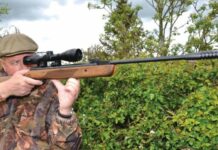





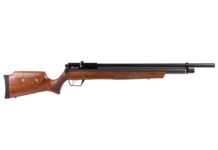






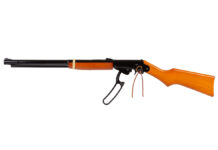

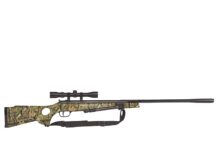

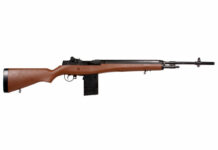




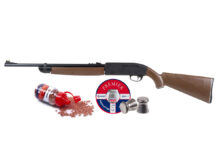





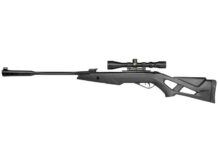






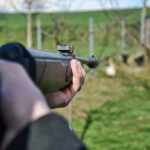



![Air gun 101: The differences between .177 & .22 – Which jobs they do best ? [Infographic]](https://airgunmaniac.com/wp-content/uploads/2024/11/1773-150x150.jpeg)